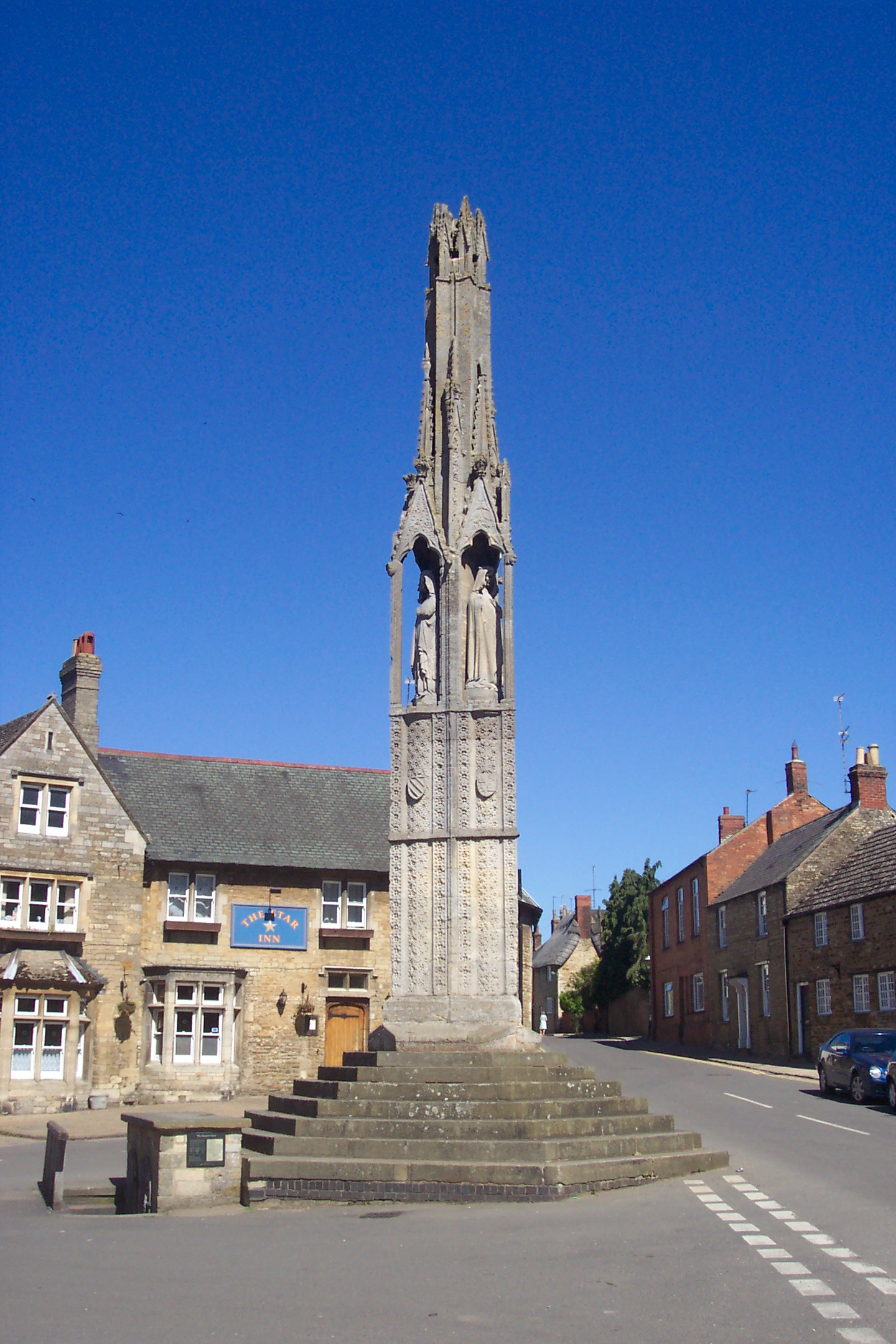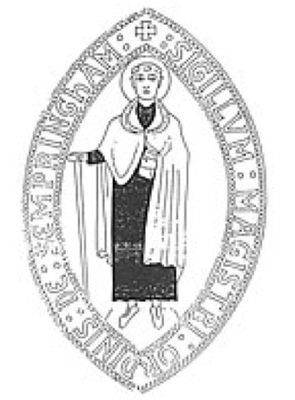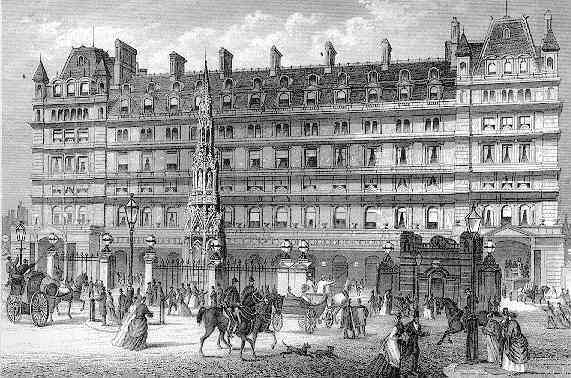|
Eleanor Cross
The Eleanor crosses were a series of twelve tall and lavishly decorated stone monuments topped with crosses erected in a line down part of the east of England. King Edward I had them built between 1291 and about 1295 in memory of his beloved wife Eleanor of Castile. The King and Queen had been married for 36 years and she stayed by the King’s side through his many travels. While on a royal progress, she died in the East Midlands in November 1290. The crosses, erected in her memory, marked the nightly resting-places along the route taken when her body was transported to Westminster Abbey near London. The crosses stood at Lincoln, Grantham and Stamford, all in Lincolnshire; Geddington and Hardingstone in Northamptonshire; Stony Stratford in Buckinghamshire; Woburn and Dunstable in Bedfordshire; St Albans and Waltham (now Waltham Cross) in Hertfordshire; Cheapside in London; and Charing (now Charing Cross) in Westminster. Three of the medieval monuments – those at Ged ... [...More Info...] [...Related Items...] OR: [Wikipedia] [Google] [Baidu] |
Geddington Eleanor Cross
Geddington is a village and civil parish on the A4300, previously A43, in North Northamptonshire between Kettering and Corby. The population of the civil parish at the 2011 census was 1,503, virtually unchanged from 1,504 at the 2001 census. The villages name means 'Farm/settlement connected Gaete' or 'farm/settlement connected with Geiti'. Alternatively, 'goat place farm/settlement'. The village contains an Eleanor cross. The monument dates from 1294, when the crosses were raised as a memorial by Edward I (1239–1307) to his late wife, Eleanor of Castile (1241–1290). There were originally 12 monuments, one in each resting place of the funeral procession as they travelled to Westminster Abbey. The Geddington cross is one of only three Eleanor crosses still standing; the other two being in Hardingstone (near Northampton) and Waltham Cross, although remnants and reconstructions of the lost ones can also be seen at other sites. The Geddington cross is regarded as the best pre ... [...More Info...] [...Related Items...] OR: [Wikipedia] [Google] [Baidu] |
St Albans
St Albans () is a cathedral city in Hertfordshire, England, east of Hemel Hempstead and west of Hatfield, north-west of London, south-west of Welwyn Garden City and south-east of Luton. St Albans was the first major town on the old Roman road of Watling Street for travellers heading north and became the city of Verulamium. It is within the London commuter belt and the Greater London Built-up Area. Name St Albans takes its name from the first British saint, Alban. The most elaborate version of his story, Bede's '' Ecclesiastical History of the English People'', relates that he lived in Verulamium, sometime during the 3rd or 4th century, when Christians were suffering persecution. Alban met a Christian priest fleeing from his persecutors and sheltered him in his house, where he became so impressed with the priest's piety that he converted to Christianity. When the authorities searched Alban's house, he put on the priest's cloak and presented himself in place of his gu ... [...More Info...] [...Related Items...] OR: [Wikipedia] [Google] [Baidu] |
St Catherine's, Lincoln
St Catherine's is an area of Lincoln, Lincolnshire, England, at the southern end of the High Street, and centred on a roundabout at its junction with the A15, B1190 (Newark Road) and South Park Avenue (continuation of the A15). The area is bordered by the South Common in the east and the River Witham in the west. It is built over the site of the 12th century Priory of Saint Katherine without Lincoln, a monastic community that ran the Hospital of Saint Sepulchre. St Katherine's The area is named after the dominant church of St Katherine's, a Grade II listed, landmark building and Anglican church.www.lincolnpriory.org St Katherine's has views over the South Common, is home to the Priory Centre (officially opened by |
Gilbertine
The Gilbertine Order of Canons Regular was founded around 1130 by Saint Gilbert in Sempringham, Lincolnshire, where Gilbert was the parish priest. It was the only completely English religious order and came to an end in the 16th century at the time of the Dissolution of the Monasteries. Modest Gilbertine revivals have taken place in the late 20th and early 21st centuries on three continents. Founding Gilbert initially established a community for enclosed contemplative nuns. He accepted seven women whom he had taught in the village school and in 1131 founded an order of nuns based on the Cistercian Rule. Gilbert set up buildings and a cloister for them against the north wall of the church, which stood on his land at Sempringham, and gave them a rule of life, enjoining upon them chastity, humility, obedience, and charity. Their daily necessaries were passed to them through a window by some girls chosen by Gilbert from among his people. As the serving maids requested that they ... [...More Info...] [...Related Items...] OR: [Wikipedia] [Google] [Baidu] |
Lincoln, Lincolnshire
Lincoln () is a cathedral city, a non-metropolitan district, and the county town of Lincolnshire, England. In the 2021 Census, the Lincoln district had a population of 103,813. The 2011 census gave the urban area of Lincoln, including North Hykeham and Waddington, a population of 115,000. Roman ''Lindum Colonia'' developed from an Iron Age settlement on the River Witham. Landmarks include Lincoln Cathedral (English Gothic architecture; for over 200 years the world's tallest building) and the 11th-century Norman Lincoln Castle. The city hosts the University of Lincoln, Bishop Grosseteste University, Lincoln City FC and Lincoln United FC. Lincoln is the largest settlement in Lincolnshire, with the towns of Grimsby second largest and Scunthorpe third. History Earliest history: ''Lincoln'' The earliest origins of Lincoln can be traced to remains of an Iron Age settlement of round wooden dwellings, discovered by archaeologists in 1972, which have been dated to the first cen ... [...More Info...] [...Related Items...] OR: [Wikipedia] [Google] [Baidu] |
Cortège
Many words in the English vocabulary are of French origin, most coming from the Anglo-Norman spoken by the upper classes in England for several hundred years after the Norman Conquest, before the language settled into what became Modern English. English words of French origin, such as ''art'', ''competition'', ''force'', ''machine'', and ''table'' are pronounced according to English rules of phonology, rather than French, and are commonly used by English speakers without any consciousness of their French origin. This article, on the other hand, covers French words and phrases that have entered the English lexicon without ever losing their character as Gallicisms: they remain unmistakably "French" to an English speaker. They are most common in written English, where they retain French diacritics and are usually printed in italics. In spoken English, at least some attempt is generally made to pronounce them as they would sound in French; an entirely English pronunciation is r ... [...More Info...] [...Related Items...] OR: [Wikipedia] [Google] [Baidu] |
Harby, Nottinghamshire
Harby is the easternmost village in the English county of Nottinghamshire. The nearest city is Lincoln, over the border in Lincolnshire. According to the 2011 census, it had a population of 336, up from 289 at the 2001 census. Heritage Eleanor of Castile The parish church of All Saints' was built in 1875–1876 in Early English style. In the east wall of the tower is a statue in memory of Eleanor of Castile, Queen Consort of King Edward I of England. She died at the nearby house of Richard de Weston on 28 November 1290. The moated site of Weston's house is to the west of the church. The Queen's body was transported to London for burial. The King ordered Eleanor crosses to be built at each place where her body had rested overnight on the journey. Windmills The capless stump of a five-storey tower windmill, built about 1877, stands at the end of Mill Field Close (). A post mill was also recorded for Harby. Parish change Harby was a township in the parish of North Clifton. It ... [...More Info...] [...Related Items...] OR: [Wikipedia] [Google] [Baidu] |
Eleonora Eduard1
Eleanor () is a feminine given name, originally from an Old French adaptation of the Old Provençal name ''Aliénor''. It is the name of a number of women of royalty and nobility in western Europe during the High Middle Ages. The name was introduced to England by Eleanor of Aquitaine, who came to marry King Henry II. It was also borne by Eleanor of Provence, who became Queen consort of England as the wife of King Henry III, and Eleanor of Castile, wife of Edward I. The name was popular in the United States in the 1910s and 1920s, peaking at rank 25 in 1920. It declined below 600 by the 1970s, again rose to rank 32 in the 2010s. Eleanor Roosevelt, the longest-serving first lady of the US was probably the most famous bearer of the name in contemporary history. Common hypocorisms include Elle, Ella, Ellie, Elly, Leonor, Leonora, Leonore, Nella, Nellie, Nelly, and Nora. Origin The name derives from the Provençal name Aliénor, which became Eléonore in '' Langue d'oïl'' ... [...More Info...] [...Related Items...] OR: [Wikipedia] [Google] [Baidu] |
Charing Cross Station
Charing Cross railway station (also known as London Charing Cross) is a central London railway terminus between the Strand and Hungerford Bridge in the City of Westminster. It is the terminus of the South Eastern Main Line to Dover via Ashford. All trains are operated by Southeastern, which provides the majority of commuter and regional services to south-east London and Kent. It is connected to Charing Cross Underground station and is near to Embankment Underground station and Embankment Pier. The station was originally opened by the South Eastern Railway in 1864. It takes its name from its proximity to the road junction Charing Cross, the notional "centre of London" from which distances from the city are measured. During the 19th century the station became the main London terminus for continental traffic via boat trains, and served several prestigious international services. It was badly damaged by an engineering accident in 1905 and extensively rebuilt, subsequently beco ... [...More Info...] [...Related Items...] OR: [Wikipedia] [Google] [Baidu] |
Queen Eleanor Memorial Cross
The Queen Eleanor Memorial Cross is a memorial to Eleanor of Castile erected in the forecourt of Charing Cross railway station, London, in 1864–1865. It is a fanciful reconstruction of the medieval Eleanor cross at Charing, one of twelve memorial crosses erected by Edward I of England in memory of his first wife. The Victorian monument was designed by Edward Middleton Barry, also the architect of the railway station, and includes multiple statues of Queen Eleanor by the sculptor Thomas Earp. It does not occupy the original site of the Charing Cross (destroyed in 1647), which is now occupied by Hubert Le Sueur's equestrian statue of Charles I. Barry based the memorial on the three surviving drawings of the Charing Cross, in the Bodleian Library, the British Museum and the collection of the Royal Society of Antiquaries. However, due to the fragmentary nature of this evidence, he also drew from a wider range of sources including the other surviving Eleanor crosses and Queen Eleanor ... [...More Info...] [...Related Items...] OR: [Wikipedia] [Google] [Baidu] |
Westminster
Westminster is an area of Central London, part of the wider City of Westminster. The area, which extends from the River Thames to Oxford Street, has many visitor attractions and historic landmarks, including the Palace of Westminster, Buckingham Palace, Westminster Abbey, Westminster Cathedral and much of the West End shopping and entertainment district. The name ( ang, Westmynstre) originated from the informal description of the abbey church and royal peculiar of St Peter's (Westminster Abbey), west of the City of London (until the English Reformation there was also an Eastminster, near the Tower of London, in the East End of London). The abbey's origins date from between the 7th and 10th centuries, but it rose to national prominence when rebuilt by Edward the Confessor in the 11th. Westminster has been the home of England's government since about 1200, and from 1707 the Government of the United Kingdom. In 1539, it became a city. Westminster is often used ... [...More Info...] [...Related Items...] OR: [Wikipedia] [Google] [Baidu] |
Charing Cross
Charing Cross ( ) is a junction in Westminster, London, England, where six routes meet. Clockwise from north these are: the east side of Trafalgar Square leading to St Martin's Place and then Charing Cross Road; the Strand leading to the City; Northumberland Avenue leading to the Thames Embankment; Whitehall leading to Parliament Square; The Mall leading to Admiralty Arch and Buckingham Palace; and two short roads leading to Pall Mall. The name also commonly refers to the Queen Eleanor Memorial Cross at Charing Cross station. A bronze equestrian statue of Charles I, erected in 1675, stands on a high plinth, situated roughly where a medieval monumental cross had previously stood for 353 years (since its construction in 1294) until destroyed in 1647 by Cromwell and his revolutionary government. The famously beheaded King, appearing ascendant, is the work of French sculptor Hubert Le Sueur. The aforementioned eponymous monument, the "Charing Cross", was the largest ... [...More Info...] [...Related Items...] OR: [Wikipedia] [Google] [Baidu] |






